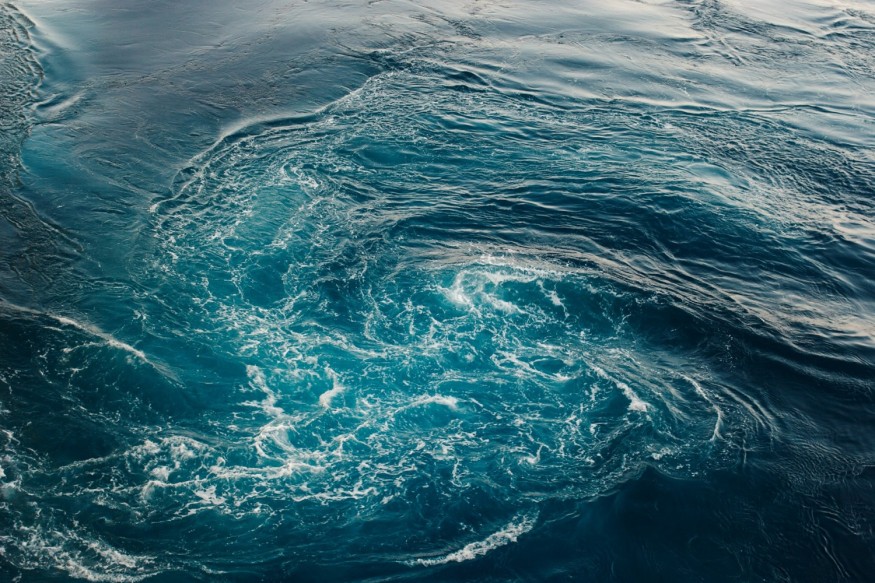A whirlpool is a swirling water formed when two opposing currents meet. It can either be small and gentle or very powerful and strong.

Smaller whirlpools are typically seen at the base of waterfalls and can also be observed in man-made structures. In the oceans, they are mainly formed by tides and can submerge large ships. Meanwhile, powerful whirlpools, known as maelstroms, are more common in seas and oceans. Below are some of the largest and most notable whirlpools in the world.
1. Saltstraumen
Saltstraumen is a small strait known for having the strongest tidal currents in the world. It is located in Bodø in Nordland county, Norway, about 6.2 miles (10 kilometers) southeast of Bodo Town.
Saltstraumen whirlpool measures about 1.9 miles (3 kilometers) long and 490 feet (149 meters) wide. About 400 million cubic meters of water in this rotary current forced its way through the strait every six hours. When the currents are at their strongest, they can form whirlpools that measure up to 33 feet (10 meters) in diameter and 16 feet (5 meters) deep.
2. Moskstraume
Moskstraumen is a marine channel formed on the Norwegian Sea between the Lofoten Point of Moskenes and Vaeroy on Mosken Island. The enormous whirlpool is created when the strong tidal current flows between the deep Vestfjorden and the Atlantic Ocean. Some of its largest rotary currents are recorded to be 130 to 160 feet (39 to 49 meters) wide and induce a surface water ripple reaching up to 3 feet (1 meter).
Moskstraumen whirlpools are the result of various factors, such as strong winds, tides, underwater topography, and the position of the Lofotodden. While most whirlpools are formed in confined stairs and rivers, Moskstraumen is an exception since it occurs in open seas. Aside from this, tides on Lofoten rise twice daily and are major contributors to whirlpool formation. A significant stream is created as it combines with the Norwegian Sea current and storm-induced flow.
READ ALSO : Physicists Surprisingly Observe an Electron Whirlpool for the First Time in Fluid Dynamics
3. Skookumchuck Narrows
This strait forms the entrance of Sechelt Inlet on the Sunshine Coast in British Columbia, Canada. The tidal flow in these areas and those of the Salmon Inlet and Narrow Inlet pass through the Sechelt Rapid before it broadens into Sechelt Inlet. Every day, vast amounts of water flow through the Skookumchuck Narrow due to tidal forces. The difference in water level on either side of the rapids can exceed 6.6 feet (2 meters) high, while the current speed can reach 30 kilometers per hour.
4. Old Sow
Old Sow Whirlpool is one of the largest in the Western Hemisphere. It is located off the shores of Deer Island in New Brunswick. The rotary current can form as wide as 250 feet (76 meters) in this region, brought by strong winds, storms, and tidal surges.
5. Naruto Whirlpools
Naruto Strait lies between Naruto and Awaji Island in Tokushima and Hyogo, Japan, known for its large tidal whirlpool. The strait measures 0.81 miles (1.3 kilometers) wide and connects the Inland Sea to the Pacific Ocean.
Since Naruto Strait is narrow, water flows through the Naruto Channel at approximately 8 miles per hour four times daily, creating vortices up to 66 feet (20 meters) wide. Aside from the record-breaking whirlpool, Naruto Strait also holds the title for having the fourth fastest current in the world.
Check out more news and information on Whirlpool in Science Times.
© 2025 ScienceTimes.com All rights reserved. Do not reproduce without permission. The window to the world of Science Times.












